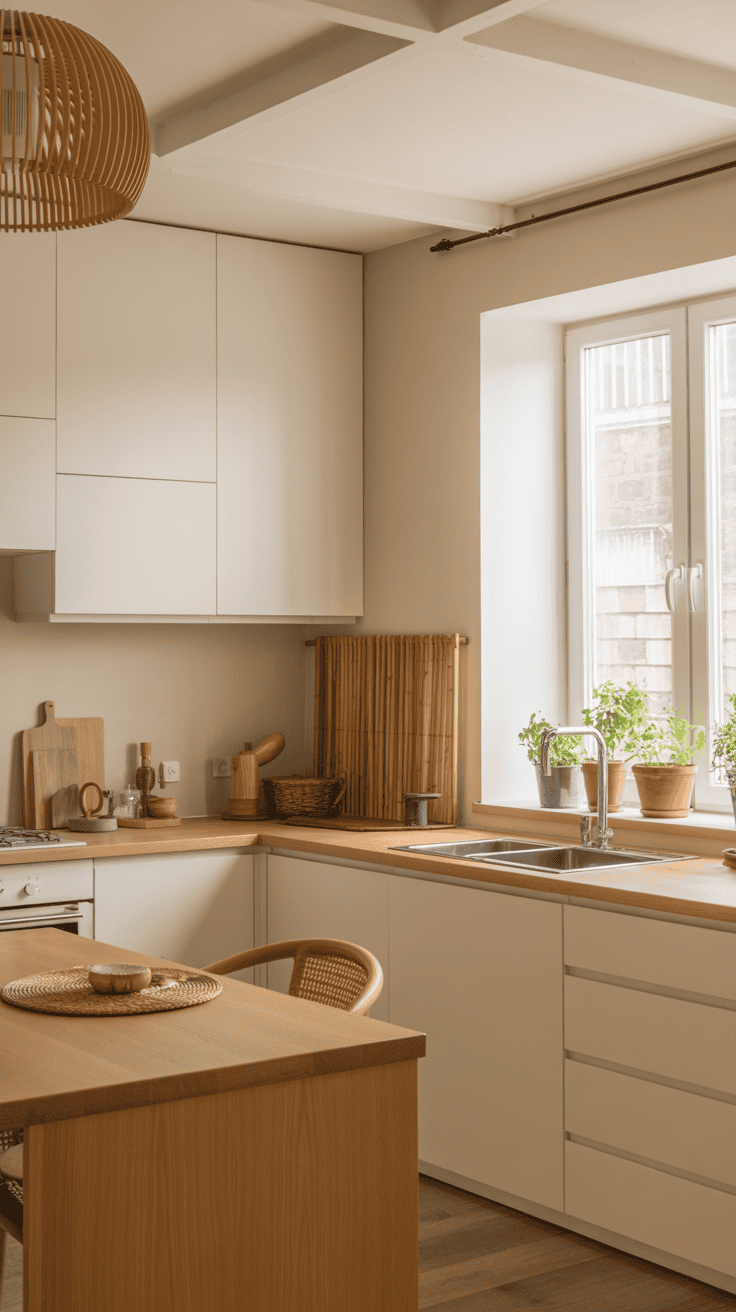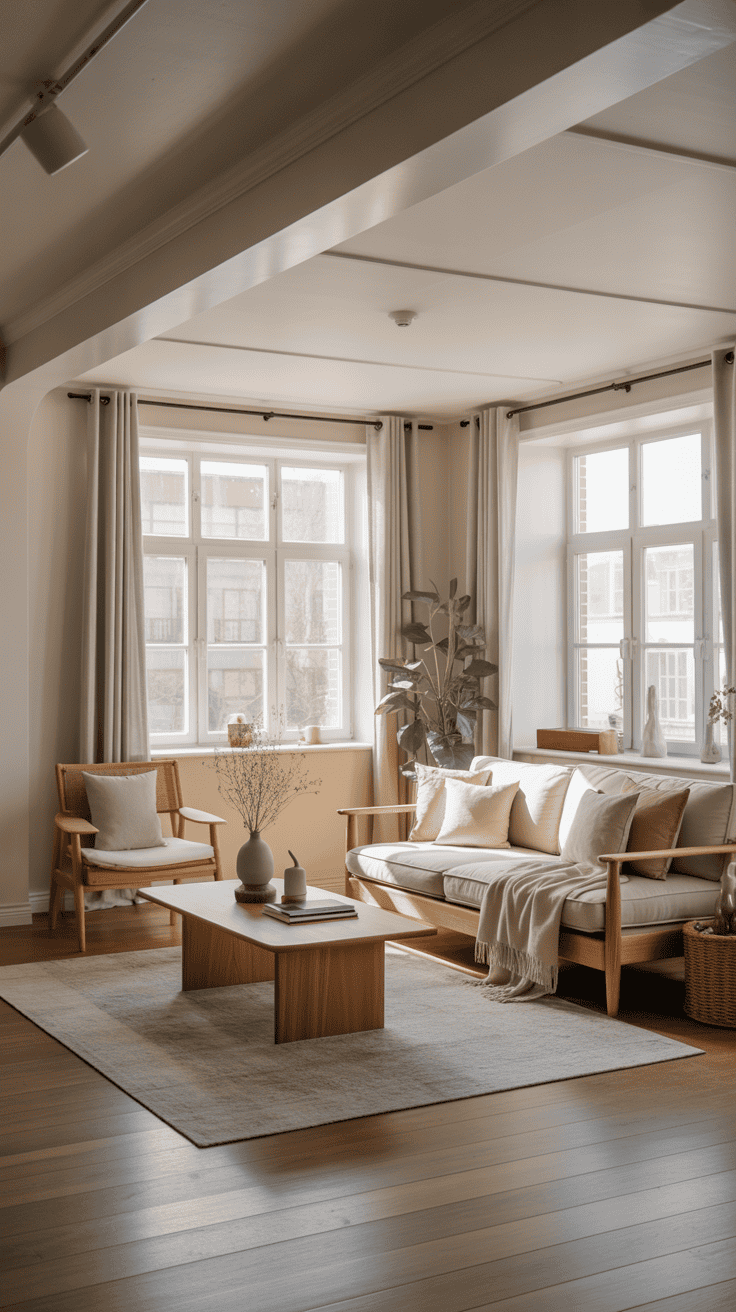This post shows 10 Japandi Interior Design Kitchen Secrets!
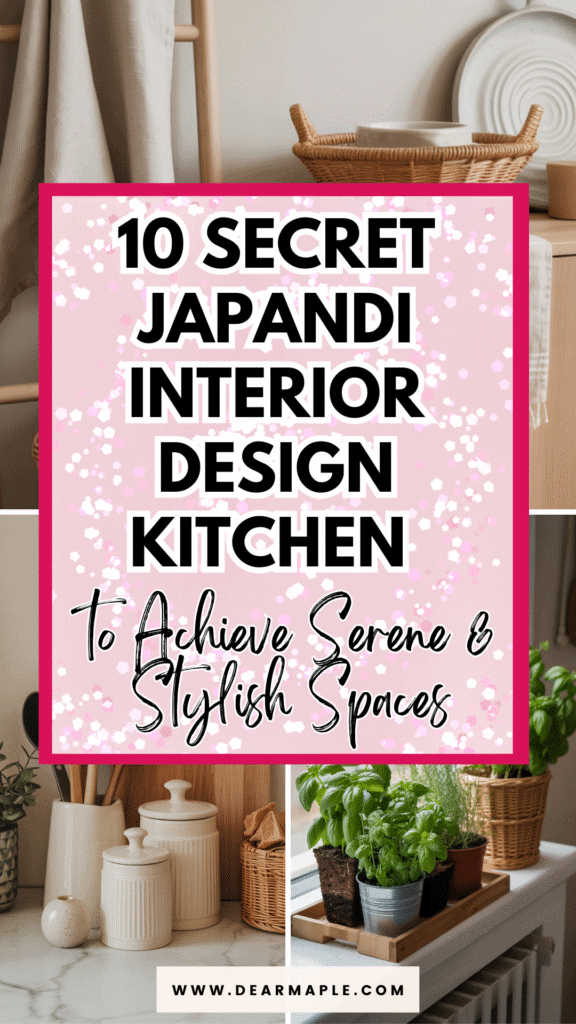
Picture this: You walk into your kitchen after a long day, and instead of feeling overwhelmed by clutter and chaos, you’re greeted by a space that literally makes you exhale. That’s the magic of Japandi interior design kitchen style—a gorgeous fusion of Japanese minimalism and Scandinavian coziness that’s taking the design world by storm.
I’ll be honest, when I first heard about Japandi, I thought it was just another design trend that would fade faster than my motivation to meal prep. Boy, was I wrong! This aesthetic has completely transformed how I think about kitchen spaces. It’s not just about looking pretty (though it definitely does that)—it’s about creating a sanctuary where you actually want to spend time.
Ready to turn your kitchen into a zen paradise? Let’s unlock the 10 secrets that’ll have your space looking like it belongs in a design magazine.
10 Japandi Interior Design Kitchen Secrets
1. Master the Art of Neutral Color Palettes
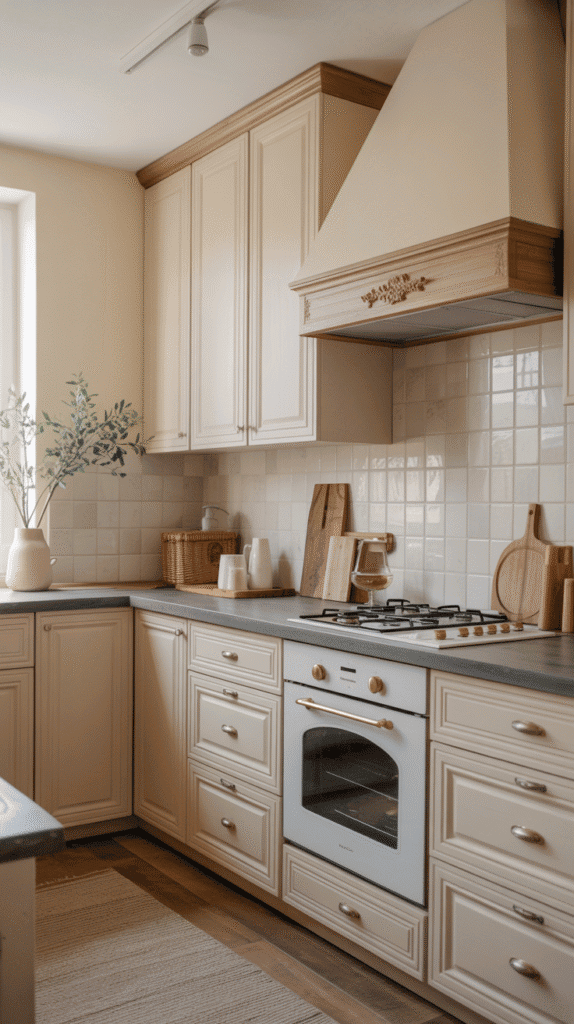
Here’s the thing about neutral color palettes—they’re not boring, they’re brilliant. The Japandi approach to kitchen colors revolves around whites, soft beiges, warm grays, and natural wood tones that create an instant sense of calm.
Think of your color palette as the foundation of your kitchen’s personality. I used to think neutral meant bland, but after experimenting with different shades of white and cream, I discovered there’s actually a whole universe of subtle variations. Warm whites like ivory or eggshell create a cozy atmosphere, while cooler whites with gray undertones feel more modern and crisp.
The secret sauce? Layer different neutral tones to create depth without chaos. Your cabinets might be a soft white, your walls a warm cream, and your countertops a gentle gray. It’s like creating a symphony where every note harmonizes perfectly.
Don’t worry about your kitchen looking like a bland hotel room—the beauty lies in the subtle variations and how natural light plays across different textures throughout the day. Trust me, once you see how peaceful this palette feels, you’ll never want to go back to that bright yellow phase we all had in the early 2000s 🙂
2. Embrace Natural Materials as Your Foundation
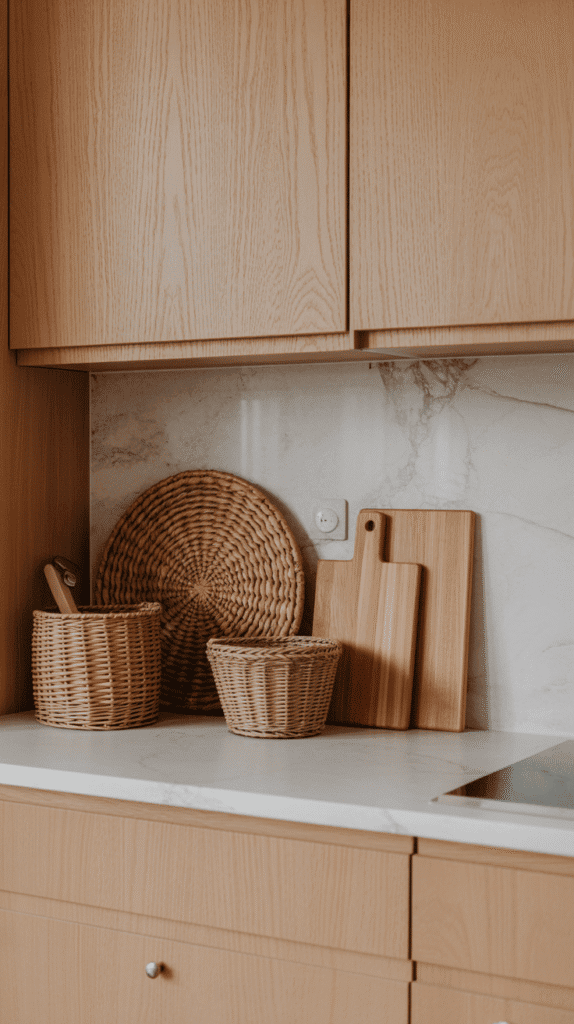
Natural materials are the heart and soul of any Japandi kitchen. We’re talking wood, stone, bamboo, and natural fibers that bring the outdoors inside and create that organic, lived-in feeling that makes a space truly special.
Wood is your best friend here—but not just any wood. Light-toned woods like oak, ash, or pine work beautifully for cabinets and countertops. I’ve seen kitchens where the entire island is made from a single piece of reclaimed wood, and honestly? It’s stunning. The natural grain patterns add visual interest without being overwhelming.
Stone countertops in soft grays or whites complement the wood perfectly. Quartz or marble with subtle veining creates that perfect balance between Japanese simplicity and Scandinavian functionality. Bamboo cutting boards, woven baskets, and linen dish towels add layers of texture that make the space feel warm and inviting.
The key is mixing these materials thoughtfully. You don’t want your kitchen to look like a craft store exploded—instead, choose 2-3 natural materials and use them consistently throughout the space. This creates cohesion while still adding visual and tactile interest that makes your kitchen feel authentically Japandi.
3. Choose Clean-Lined Cabinetry with Hidden Hardware
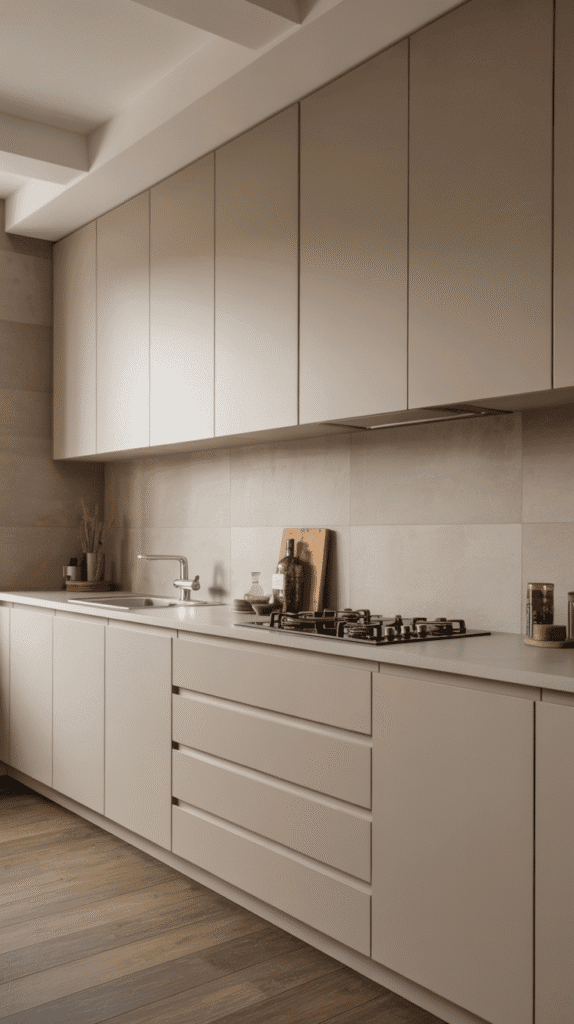
Let’s talk about the game-changer that is clean-lined cabinetry. If your kitchen cabinets currently look like they belong in a Victorian mansion, it’s time for a reality check. Japandi style demands simplicity, and that starts with your cabinet doors.
Flat-panel doors are your new best friend. No raised panels, no decorative molding, no fancy details that collect dust and make your kitchen feel busy. Just clean, simple lines that let the beauty of the wood grain or paint color shine through.
But here’s where it gets really good—hidden hardware. I’m talking about integrated handles that are cut right into the cabinet doors, or better yet, push-to-open mechanisms that eliminate hardware altogether. Ever noticed how traditional kitchen handles stick out and create visual clutter? Yeah, Japandi style said “not today” to that nonsense.
The result is cabinetry that looks like it’s floating, creating those clean horizontal lines that make your kitchen feel larger and more peaceful. I switched to handleless cabinets in my own kitchen, and the difference is incredible. The space feels so much more streamlined and modern, plus I don’t bang my hip on cabinet handles anymore—bonus points for functionality!
4. Create Visual Breathing Room with Strategic Negative Space
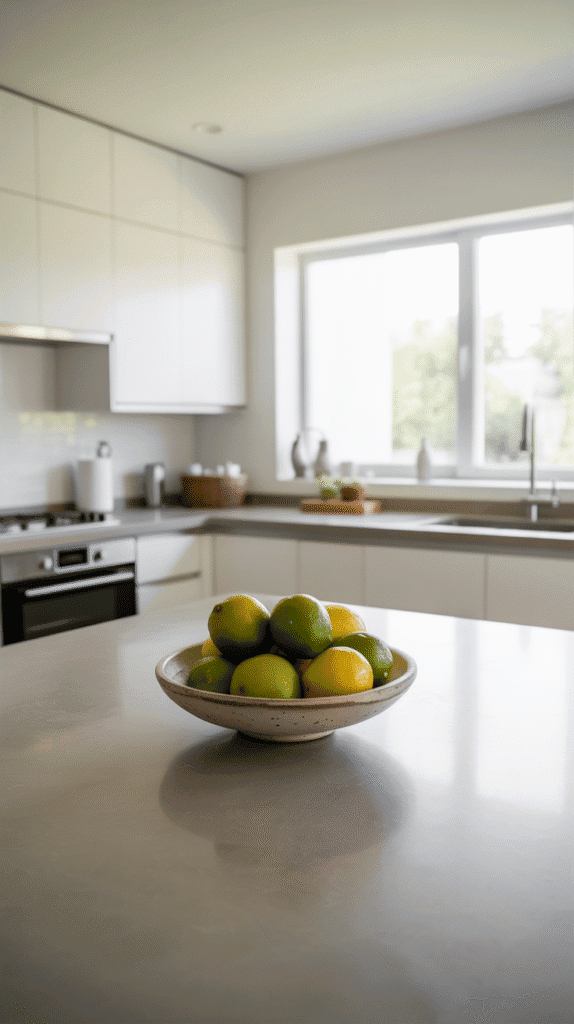
Here’s something most people get wrong about kitchen design: they think every inch needs to be filled with something. Negative space (aka empty space) is actually one of your most powerful design tools, especially in a Japandi kitchen.
I used to be that person who had every countertop surface covered with appliances, decorative bowls, and random kitchen gadgets. Then I discovered the magic of clear surfaces, and let me tell you—it’s life-changing. Empty countertops create visual breathing room that makes your entire kitchen feel more spacious and serene.
The secret is being strategic about what you display. Instead of having your coffee maker, toaster, blender, and stand mixer all fighting for counter space, choose one or two items that you use daily and store the rest. Your kitchen island should have mostly clear space with maybe one beautiful bowl or a small plant.
This doesn’t mean your kitchen should look like a sterile laboratory (nobody wants that). It means being intentional about what you choose to display. A single, beautiful wooden cutting board leaning against the backsplash can be more impactful than five different kitchen gadgets cluttering up the space. Less really is more when it comes to creating that serene Japandi vibe.
5. Incorporate Wabi-Sabi Elements for Authentic Character
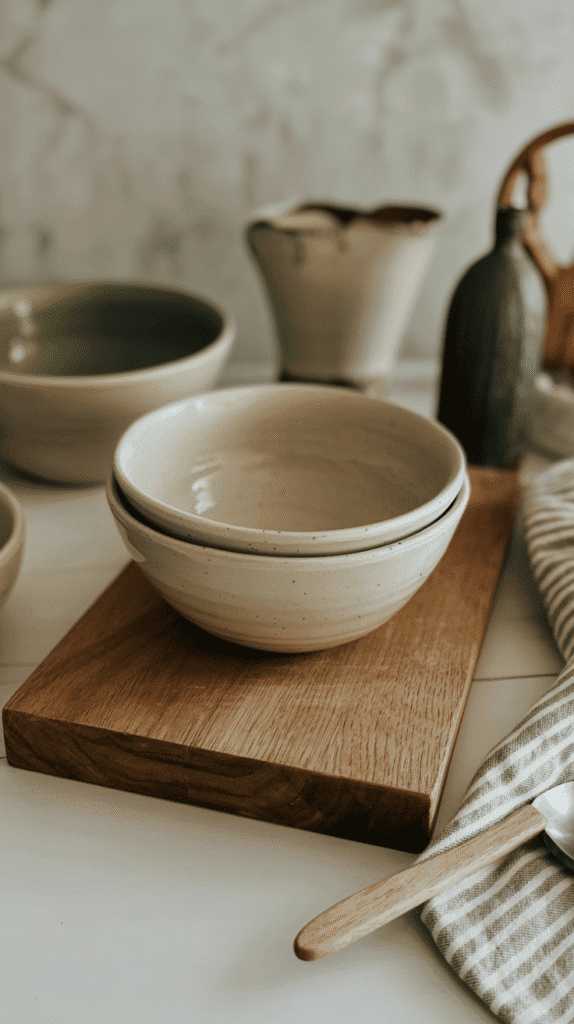
Now we’re getting to the fun part—wabi-sabi, the Japanese concept of finding beauty in imperfection. This is where your Japandi kitchen gets some personality and stops looking like a showroom that nobody actually lives in.
Think handcrafted ceramics with slight irregularities, weathered wood cutting boards that tell a story, or that gorgeous pottery bowl you picked up at a local artisan market. These imperfect elements add character and warmth that perfectly balances the clean lines of Scandinavian design.
I have this ceramic vase on my kitchen counter that’s slightly lopsided—it was a “mistake” from a pottery class, but it’s become one of my favorite pieces. It adds that authentic, human touch that makes the space feel lived-in rather than sterile.
The key is balancing these imperfect elements with the precision of Scandinavian design. You might have sleek, modern cabinets paired with a rustic wooden cutting board, or perfect white subway tiles with handmade ceramic bowls displayed on open shelving. It’s about creating a conversation between the perfect and imperfect that feels natural and authentic.
Don’t go overboard though—one or two wabi-sabi pieces per area is plenty. The goal is to add character, not chaos.
6. Select Multi-Functional Furniture That Serves Double Duty
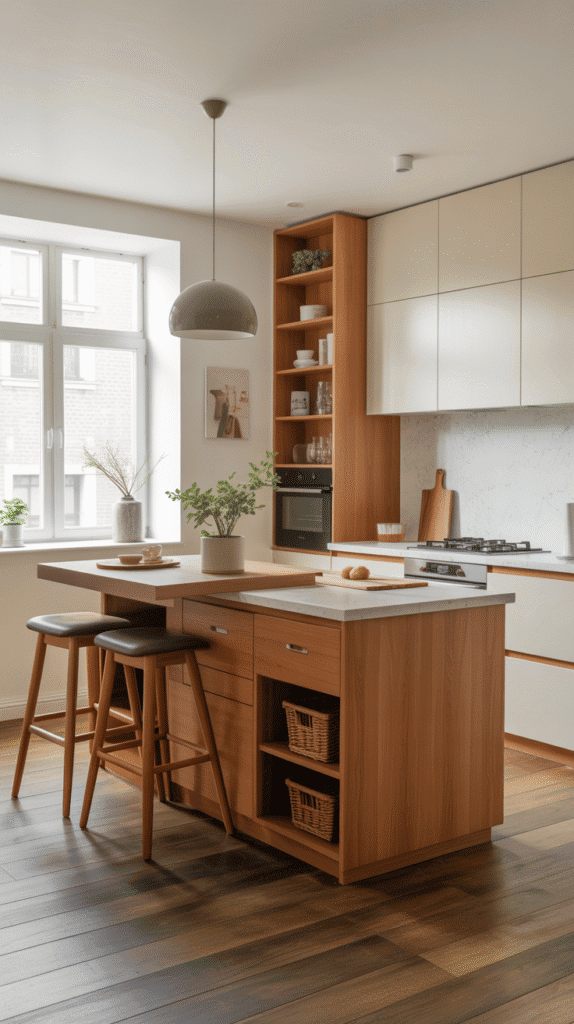
Multi-functional furniture is where Japandi design really shows its practical side. Why have a kitchen island that just looks pretty when it can also provide storage, extra prep space, and seating all in one?
I’m obsessed with kitchen islands that have built-in storage underneath—drawers for utensils, cabinets for pots and pans, and maybe even a wine rack if you’re feeling fancy. The clean lines stay intact, but you’re maximizing every inch of space without adding clutter.
Dining tables that double as prep spaces are another brilliant move. Instead of a separate dining table and kitchen island, choose one beautiful piece that can handle both tasks. During the day, it’s your prep station for cooking. In the evening, it transforms into a dining space for family meals.
Bar stools that tuck completely under the counter keep sight lines clean, while open shelving that displays dishes serves both storage and decorative purposes. The Japanese concept of efficiency meets Scandinavian functionality, and the result is a kitchen that works as hard as it looks good.
FYI, this approach also saves money since you’re buying fewer pieces overall. More function, less stuff, same style—that’s a win in my book!
7. Bring Nature Indoors with Living Elements

Nothing says serene and stylish like bringing a little bit of nature into your kitchen space. Plants aren’t just Instagram props—they’re living elements that purify the air and add that organic touch that makes Japandi design feel authentic.
The trick is choosing the right plants for your kitchen environment. Low-maintenance options like pothos, snake plants, or herbs like basil and mint work beautifully and actually serve a purpose. I keep a small herb garden on my windowsill, and there’s something so satisfying about snipping fresh basil for dinner.
Natural light optimization is crucial here. If your kitchen doesn’t get tons of natural light, don’t force it with high-maintenance plants that’ll just die and make you feel guilty. Instead, focus on plants that thrive in lower light conditions, or use strategic placement near windows to maximize the light you do have.
A single, beautiful plant in a simple ceramic pot can be more impactful than five small plants scattered around the space. Think about plants as living sculptures that add vertical interest and organic shapes to balance all those clean horizontal lines.
And hey, if you’re like me and have a bit of a black thumb, start with herbs—at least if they die, you can claim you were just “harvesting” them aggressively 🙂
8. Invest in Quality Over Quantity for Lasting Impact
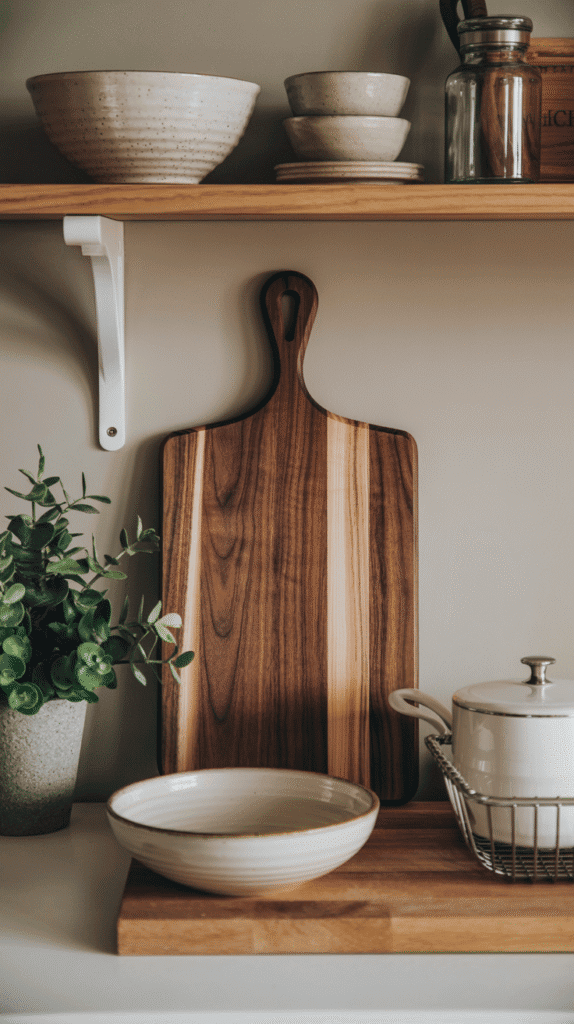
Here’s where I’m going to sound like your financially responsible friend who always gives good advice: invest in quality pieces rather than filling your kitchen with cheap stuff that’ll need replacing in a year.
Japandi design is all about timeless pieces that age beautifully. That gorgeous wooden cutting board might cost more upfront, but it’ll develop a beautiful patina over time and last for decades. Those ceramic bowls from a local artisan might be pricier than mass-produced ones, but they’ll never go out of style.
I learned this lesson the hard way after buying a cheap kitchen island that started falling apart after six months. Now I save up for pieces that are built to last and designed to age gracefully. Quality materials like solid wood, natural stone, and well-made ceramics actually get more beautiful with time and use.
This approach also supports the minimalist aspect of Japandi design—when you buy fewer, better pieces, you naturally create that uncluttered look that’s so essential to the style. Plus, there’s something deeply satisfying about using tools and furniture that feel substantial and well-made.
Think of it as building a kitchen wardrobe of classics rather than chasing every trend that comes along.
9. Layer Subtle Textures to Add Warmth Without Clutter
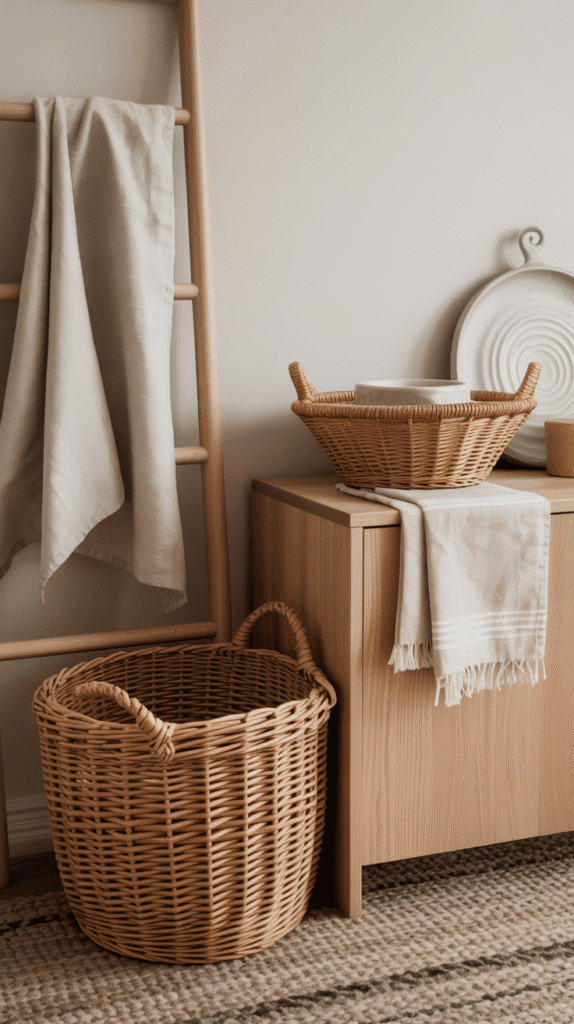
Texture layering is an art form in Japandi design, and your kitchen is the perfect place to master it. The goal is adding warmth and visual interest without creating chaos—it’s like being a texture ninja.
Linen dish towels in natural colors add softness against hard surfaces. Woven baskets for storage bring in that organic, handmade feel. A natural fiber rug in front of the sink creates a cozy spot while protecting your floors. These elements work together to create depth and interest without overwhelming the clean aesthetic.
The secret is sticking to natural materials and neutral colors while varying the textures. Smooth ceramic next to rough wood, soft linen against cool stone, woven baskets alongside sleek cabinets—each texture plays off the others to create a rich, layered look.
I have a collection of different cutting boards—one smooth marble, one rough-hewn wood, one with a subtle grain pattern—and I display them leaning against the backsplash. They’re functional, beautiful, and add textural variety without taking up counter space.
Just remember to keep it subtle. You want people to feel the coziness rather than be hit over the head with it.
10. Balance Minimalism with Functional Beauty

The final secret to Japandi interior design kitchen success? Learning to balance that minimalist aesthetic with pieces that are both functional and beautiful. Every item in your kitchen should earn its place by being useful, beautiful, or ideally both.
Display only essential items that serve a purpose—but make sure those items are gorgeous enough to be on display. That wooden spoon holder isn’t just storage; it’s a sculptural element. Those ceramic canisters aren’t just for coffee and sugar; they’re decorative objects that happen to be useful.
The “everything has a place” philosophy is crucial here. Beautiful items get to live on counters and open shelves. Less attractive but necessary items get tucked away in drawers and closed cabinets. This keeps your space looking intentional rather than accidental.
I’ve found that the best Japandi kitchens feel like curated collections where every piece was chosen thoughtfully. Your knife block should be beautiful enough to be art. Your dish soap should come in a bottle you don’t mind leaving by the sink.
Making everyday objects part of the design aesthetic is what transforms a regular kitchen into a Japandi sanctuary. It’s about elevating the mundane into something beautiful—and honestly, that’s pretty magical.
Wrapping It All Up
Creating a Japandi interior design kitchen isn’t about following a strict set of rules—it’s about embracing a philosophy that values simplicity, natural beauty, and intentional living. These 10 secrets will help you create a space that’s not just Instagram-worthy, but actually livable and soul-nourishing.
Start with one or two elements that resonate with you most. Maybe it’s clearing your countertops to create that breathing room, or investing in one beautiful piece that makes you smile every time you use it. Small changes can create big impact when they’re aligned with the overall aesthetic.
The best part about Japandi design? It’s not going anywhere. While other trends come and go, this timeless approach to creating serene, stylish spaces has staying power. You’re not just redesigning your kitchen—you’re creating a daily retreat that’ll serve you well for years to come.
Now go forth and create that zen paradise you deserve. Your future self (and your morning coffee routine) will thank you! 🙂
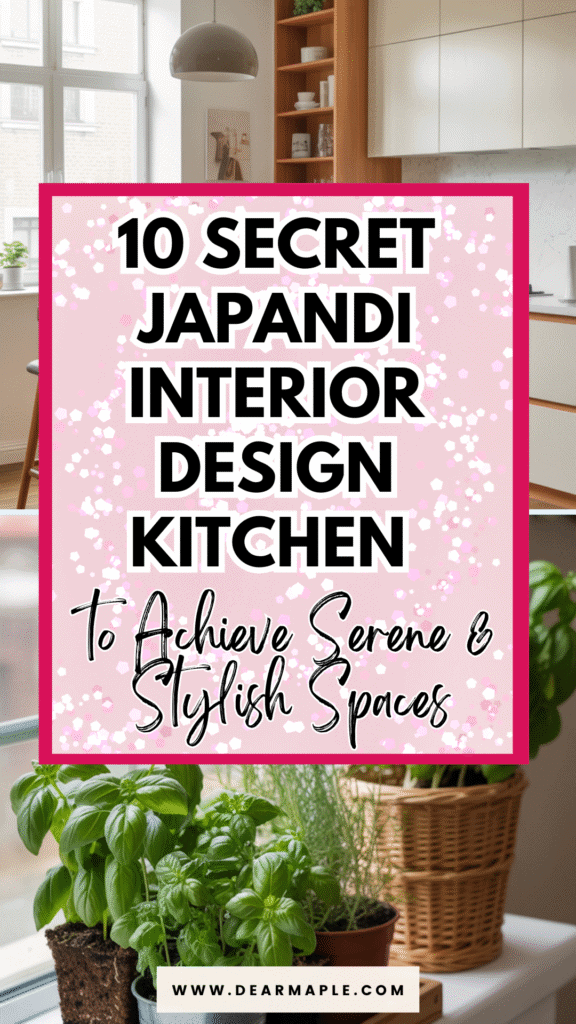
This post shows 10 Japandi Interior Design Kitchen Secrets!

